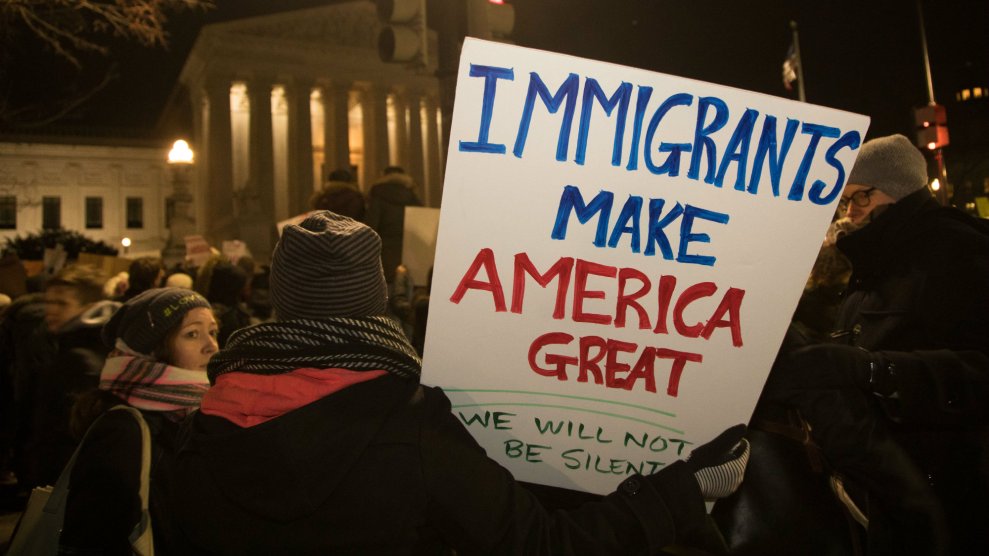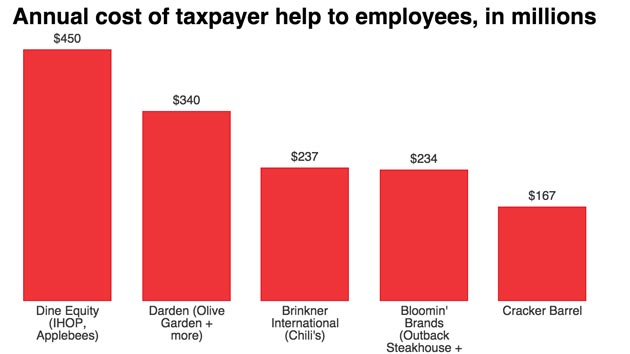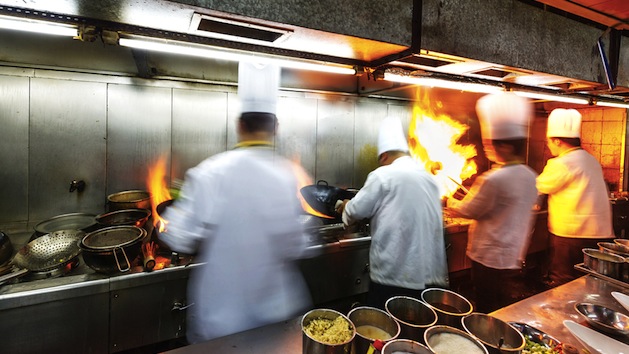On this episode of the Mother Jones food politics podcast, Bite, restaurant owners dish about what it’s like to run an eatery in the age of Trump-administration immigration raids.
Back on January 25, President Donald Trump issued an executive order vowing to crack down on the estimated 11 million undocumented immigrants living in the United States. The move confirmed that Trump meant to make good on the anti-immigrant zealotry he repeatedly spewed during his campaign—and sent shock waves through the US restaurant scene.
That’s because about 15.7 percent of US restaurant workers are undocumented immigrants, and another 5.9 percent are foreign-born US citizens, as this 2014 study from the Economic Policy Institute (EPI) shows. So when Trump ramps up the pressure on undocumented US residents, he’s also making life stressful for the people who cook restaurant meals, wait tables, and wash dishes.
As if they didn’t have enough on their plates to deal with. According to EPI, restaurant workers’ median wage stands at $10 per hour, tips included—and hasn’t budged, in inflation-adjusted terms, since 2000. For non-restaurant US workers, the median hourly wage is $18. That means the median restaurant worker makes 44 percent less than other workers. Benefits are also rare—just 14.4 percent of restaurant workers have employer-sponsored health insurance and 8.4 percent have pensions, vs. 48.7 percent and 41.8 percent, respectively, for other workers.
As a result of these paltry wages, more than 40 percent of restaurant workers live below twice the poverty line—the income level necessary for a family to make ends meet. That’s double the rate of non-restaurant workers. In other words, Trump is going after the most vulnerable subset of an extremely vulnerable group of workers.
On Thursday of last week, activists organized a national Day Without Immigrants, a kind of general strike that included the closing of restaurants in Atlanta, Austin, Detroit, Philadelphia, Portland, San Francisco, Phoenix, Nashville, Albuquerque, Denton, Dallas, Fort Worth, and—most prominently— Washington, DC. My colleague Nathalie Baptiste reports that busy DC spots Busboys and Poets and Bad Saint shut their doors that day, as did all of the restaurants owned by prominent chef Jose Andrés, including Jaleo and Zaytinya.
The gesture took place in a highly charged atmosphere, amid reports that US immigration authorities arrested hundreds of undocumented immigrants in at least a half-dozen states, including Florida, Kansas, Virginia, and my home state, Texas. Things got really tense in my hometown of Austin, where the Immigration and Customs Enforcement (ICE) set up checkpoints in low-income neighborhoods with high concentrations of immigrants.
Meanwhile, a “Sanctuary Restaurant” movement gained momentum. Launched back in January by the Restaurant Opportunities Center, Sanctuary Restaurants pledge not to “allow any harassment of any individual based on immigrant/refugee status, race, religion, gender, or sexual orientation to occur in their restaurant” and hang a “Sanctuary Restaurant” sign on their doors. By last week, more than 100 had signed on nationwide.
In the midst of it all, Maddie and I hit the streets to talk to a couple of participating restaurants for the new episode of Bite.
I talked to Johhny Livesay, the chef and co-founder of Black Star Co-op, a community-owned, worker-managed pub and brewery in Austin. In addition to signing on as a sanctuary restaurant, Black Star also has an innovative compensation policy: all the workers are paid a living wage, with benefits, and tips aren’t accepted. Austin has emerged as an incubator of restaurants challenging the industry’s unfair practices. L’Oca d’Oro, an Italian spot helmed by the former punk-rock musician Fiore Tedesco, also rejects the standard tipping model and has joined the sanctuary-restaurant movement.
And Maddie spoke with Penny Baldado, the owner of a lunch joint called Cafe Gabriela in Oakland, California. Penny is an immigrant herself—she’s originally from the Philippines. Give it a listen, and subscribe on iTunes if you haven’t already.
Bite is Mother Jones‘ podcast for people who think hard about their food. Listen to all our episodes here, or subscribe in iTunes or Stitcher or via RSS.













